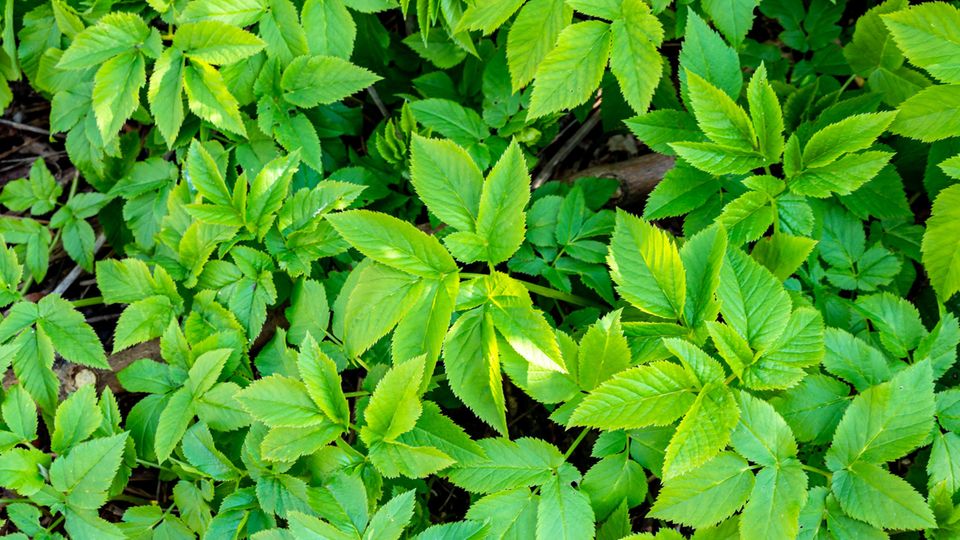Aegopodium podagraria
Giersch in the garden: How to prevent the umbels from spreading
If the goutweed weren’t so stubborn, you could definitely enjoy the beautiful white flowers
© Anka100 / Getty Images
Girdweed is not welcome in every garden: once sown, the umbelliferous plant spreads unstoppably. If you want to prevent the rampant weeds from spreading through your beds, you have to stop them. We’ll tell you a few common methods.
Due to the shape of its leaves, which are reminiscent of the hoof of a goat (goat), the goutweed is also called goat’s foot. Typical of the umbelliferous plant is its triangular leaf stalk, from which three groups of leaves emerge – each of which in turn has three leaves. The so-called “rule of three” is a sure sign that the proliferating weed is goutweed. The white umbelliferous flowers, which stretch their heads in the air between June and July, are also clearly visible. And for many bees, but also butterflies serve as a source of food. Unfortunately, the plant has a natural habit of spreading unhindered via its underground rhizomes. If you want to prevent this, you can use various methods.
Fight ground elder: How to get rid of the weeds Typical features of the umbellifer: a triangular petiole, from which three leaf groups branch off, each of which has three leaves © Animaflora / Getty Images
Since the goutweed can sow itself above ground with its seeds and at the same time wander through the soil with its rhizomes, it is advisable to remove the umbelliferous plant early on when it is young. The following three methods show how this works best.
Method 1: In order to ban weeds from the beds in the long term, the most effective method is to remove the rhizomes, which are up to 30 centimeters deep, from the soil in autumn or spring. It is important to know that you have to catch the entire braid – if you miss just a tiny piece, the goutweed can drive out again. Proceed as follows: Loosen the (unplanted) soil with a digging fork step by step and expose the rhizome network. Do not use a spade as there is too much risk of damaging the underground parts of the plant when digging it up. Then dispose of the weeds with the residual waste and not on the compost.
A notice: Remove goutweed before it forms seeds, as removing them will cause them to be borne by the wind and then sprout again.
Method 2: To combat weeds in the long term, you can nip ground elder (in the truest sense of the meaning) in the bud. All you need is some cardboard or a weed fleece – and lots of patience. Because this method lasts for several years before the umbelliferous plant disappears completely from the beds. Proceed as follows: First, the leaves and stems must be removed with a secateurs completely cut off before laying one of the above covering options over the ground and weighing it down with sufficient bark mulch (approx. ten centimeters are required). After about two years, the rhizomes should be completely dead.
Method 3: Another way to combat ground elder is to use chemicals weed killers – so-called herbicides. However, this method should only be used when your beds are completely overgrown and you have no other way out. It is important to know that the application is not possible across the board if your beds are planted. Otherwise, not only the weeds, but also other plants around them would be damaged by the treatment. On unplanted areas you can fight ground elder with a weed killer, the exact application can be found on the manufacturer’s packaging.
A notice: Do not apply the herbicide during rain (or dew). The umbellifer should be dry before each treatment. It is also advisable not to let any pets near the goutweed when the remedy is being used. It should also make sense to treat weeds from a height of ten centimeters so that the plants can absorb enough herbicides.
Source: my beautiful garden
You might also be interested in:
This article contains so-called affiliate links. Further information are available here.



